
The 12 Greatest Kings of India: A Deep Dive into Their Empires!
Explore the legacies of 12 of India's greatest kings, from MahaRaj Ashoka to Shivaji Maharaj. Discover the cultural, economic and military achievements of their empires in this in-depth and human account of India's rich history.
INDIAN HISTORYEMPIRES/HISTORYEDUCATION/KNOWLEDGE
Sachin K Chaurasiya
6/27/20259 min read


India's rich history is marked by the rise and fall of empires, each of which was ruled by powerful kings who left an indelible mark on the cultural, political and social fabric of the subcontinent. These kings were not only great warriors but also patrons of art, culture and religion, making India what it is today. This article explores the lives and legacies of 12 of India's greatest kings and the empires they built and ruled over.
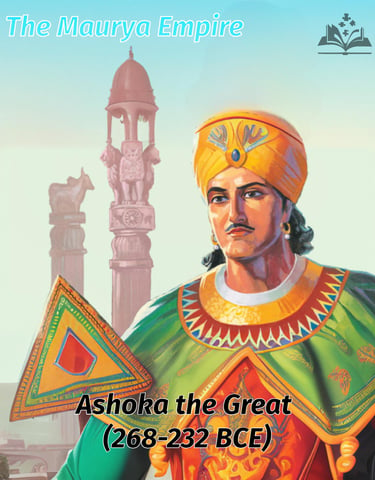

Ashoka the Great (268-232 BCE)—The Maurya Empire
Ashoka the Great (सम्राट अशोक महान), the third ruler of the Maurya dynasty (मौर्य वंश), is often remembered as one of India's most remarkable and benevolent emperors. His reign saw the zenith of the Maurya Empire, which stretched from modern-day Afghanistan in the west to Bengal in the east and from the Himalayas in the north to Tamil Nadu in the south.
Empire Expansion: Ashoka expanded his empire through a series of military campaigns, the most notable being the Kalinga War. However, the devastation of this war caused him to convert to Buddhism and turn from conquest to diplomacy and public welfare.
Cultural Influence: Ashoka's adoption of Buddhism and his efforts to promote the religion had a profound impact on the spread of Buddhist culture throughout Asia. His support for the dissemination of Buddhist teachings as well as the construction of stupas and viharas helped the religion spread from Central Asia to Southeast Asia.
Administrative Innovation: The hallmark of Ashoka's administration was a centralized bureaucracy. He appointed provincial governors to maintain control over the vast empire and established an extensive network of spies and messengers to ensure smooth governance.
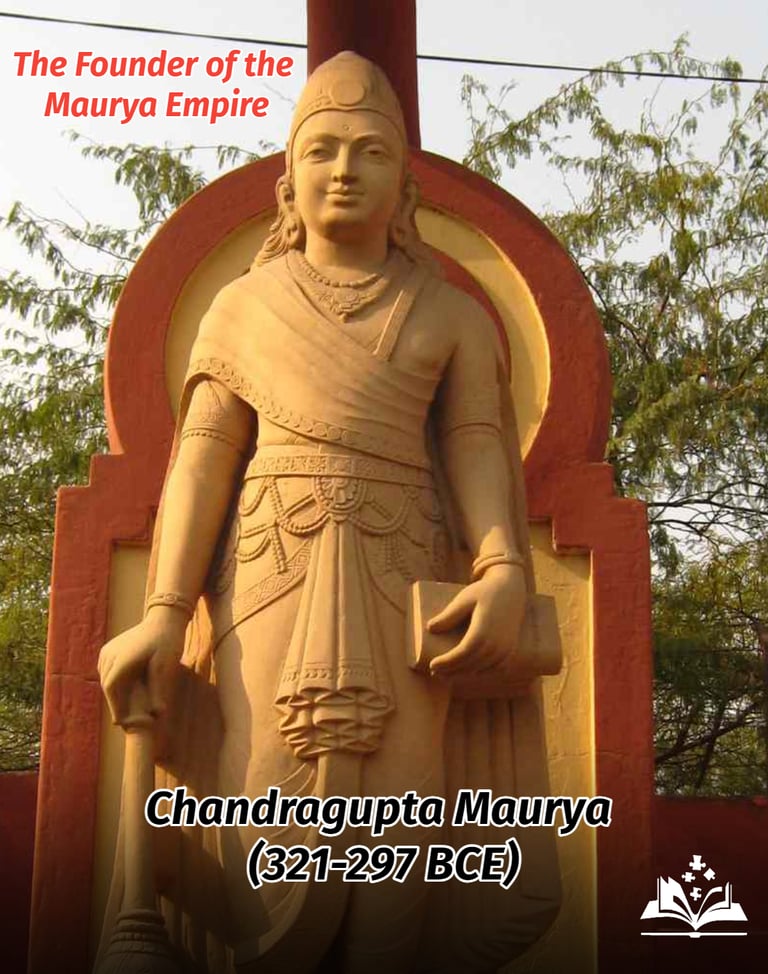

Chandragupta Maurya (321-297 BCE) - The Founder of the Maurya Empire!
Chandragupta Maurya (चन्द्रगुप्त मौर्य), founder of the Maurya dynasty (मौर्य वंश), is credited with unifying much of the Indian subcontinent under one rule, an unprecedented achievement in Indian history. His reign laid the foundation for one of India's most extensive empires.
Military achievements: Chandragupta built a massive army, one of the largest armies of the ancient world, consisting of over 600,000 infantry, 30,000 cavalry, and 9,000 war elephants. His military prowess enabled him to defeat the Nanda dynasty and conquer much of northern and central India.
Alliance with Seleucus I: After defeating Seleucus I, the successor of Alexander the Great, Chandragupta gained control of areas ranging from modern-day Afghanistan to Balochistan. The victory also led to a marriage alliance that strengthened his position.
Economic policies: Chandragupta's reign saw the establishment of a unified currency system and standardized weights and measures, which boosted trade across his vast empire. His administrative skills are exemplified in the Arthashastra, a treatise on statecraft believed to have been written by his advisor Chanakya.
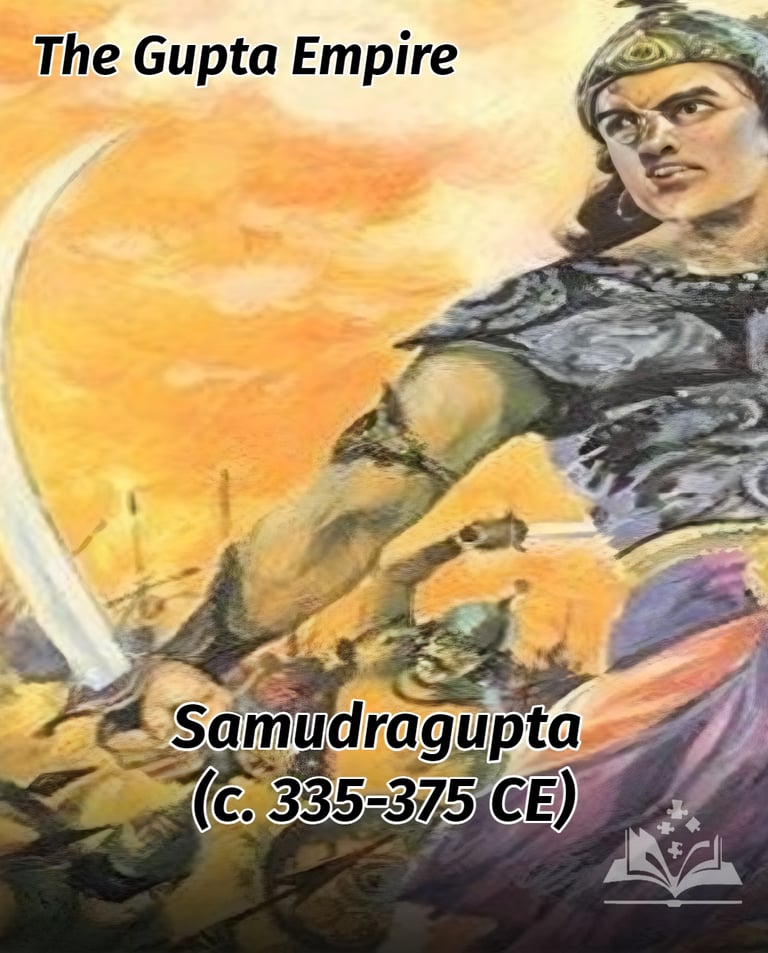

Samudragupta (c. 335-375 CE)—The Gupta Empire!
Samudragupta (समुद्रगुप्त), often called the 'Napoleon of India', was a formidable ruler of the Gupta Empire. His reign saw extensive military conquests and a revival of Hindu culture.
Military conquests: Samudragupta's military campaigns extended his empire from the Ganges valley to the far south. His southern conquests, however, were marked by a policy of diplomacy rather than direct annexation, as he allowed the defeated southern kings to retain their thrones in return for tribute.
Cultural patronage: Samudragupta was a patron of arts, literature, and religion. His reign saw the composition of classical Sanskrit literature and the construction of temples dedicated to Hindu deities.
Coinage: The gold coins issued during Samudragupta's reign are considered masterpieces of ancient Indian numismatics. They depict him in various roles, such as warrior, musician, and horseman, symbolizing his multifaceted personality.
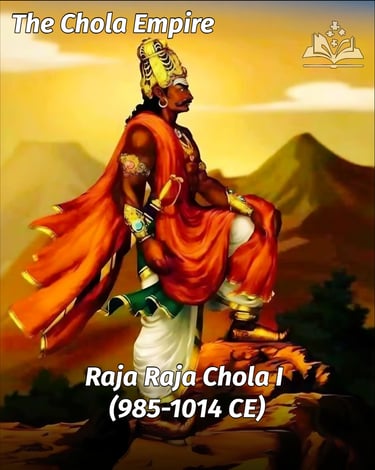

Raja Raja Chola I (985-1014 CE)—The Chola Empire!
Raja Raja Chola I (राजा राज चोल प्रथम) was the most famous ruler of the Chola dynasty (चोल वंश), during whose reign the Chola empire reached its peak. He is remembered for his military conquests, administrative reforms, and patronage of art and architecture.
Maritime Power: Raja Raja Chola established a formidable navy, which extended Chola influence to Southeast Asia, the Maldives, and Sri Lanka. His naval strength also ensured the safety of his empire's coastline from external threats.
Administrative Reforms: He reorganized the empire into units called Valanadas (वलनादास), each of which was ruled by a viceroy. This ensured efficient governance and tax collection, contributing to the stability and prosperity of the empire.
Religious Contributions: Raja Raja Chola's reign saw the construction of magnificent temples, the most notable of which is the Brihadeeswarar Temple (बृहदेश्वर मंदिर) in Thanjavur, which remains an architectural marvel of the Dravidian style. The temple also became a center of Shaivism, reflecting his devotion to God of destruction, Shiv Ji.
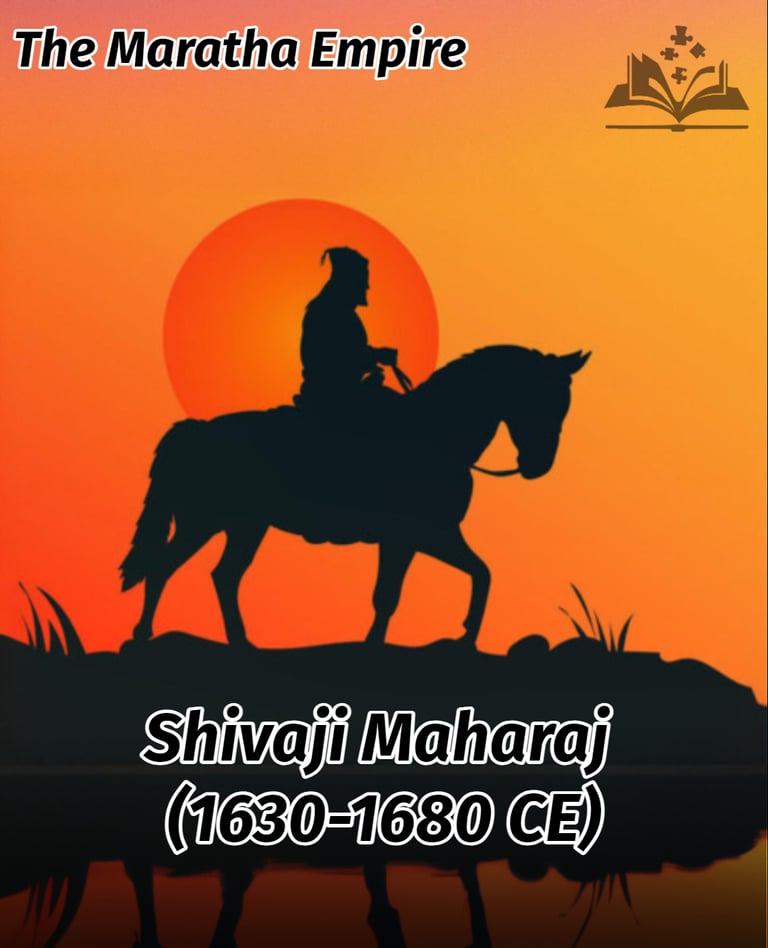

Shivaji Maharaj (1630-1680 CE)—The Maratha Empire!
Shivaji Maharaj (शिवाजी महाराज), the founder of the Maratha Empire (मराठा साम्राज्य), is considered one of the greatest and visionary rulers of India. His reign laid the foundation for the emergence of the Marathas as a major power in India.
Military Strategy: Shivaji pioneered the use of guerrilla warfare tactics, which helped him successfully challenge the much larger and better equipped Mughal armies. His strategic use of forts and swift cavalry made him a formidable opponent.
Administrative System: Shivaji introduced the Ashtapradhan System (अष्टप्रधान प्रणाली), a council of eight ministers, each responsible for different aspects of governance. This decentralised administrative system ensured efficient governance and allowed for quick decision-making.
Naval Power: Recognizing the importance of a strong navy, Shivaji built a formidable naval force to protect his coastal areas. His navy not only protected the Maratha coastline but also challenged the dominance of foreign powers such as the Portuguese and the Siddis.
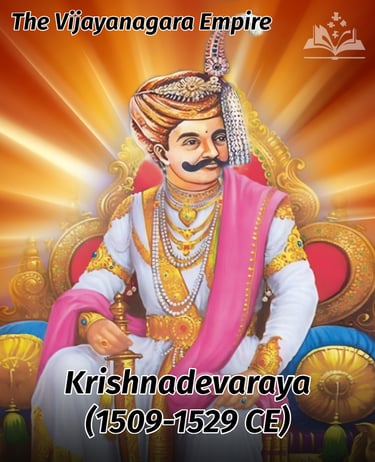

Krishnadevaraya (1509-1529 CE)—The Vijayanagara Empire!
Krishnadevaraya (कृष्णदेवराय), the greatest ruler of the Vijayanagara Empire (विजयनगर साम्राज्य), is remembered for his military victories, economic prosperity, and cultural patronage.
Military campaigns: Krishnadevaraya's reign saw successful military campaigns against the Bahmani Sultanate, the Gajapati Empire, and other regional powers. His victories expanded the empire's borders and solidified its position as the dominant power in South India.
Economic prosperity: The Vijayanagara Empire under Krishnadevaraya earned immense wealth, especially from the trade in horses, spices, and precious stones. The capital city of Hampi was one of the richest and most prosperous cities in the world during his reign.
Cultural patronage: Krishnadevaraya was a great patron of arts and literature, especially Telugu literature. His court had poets and scholars, including the famous Allasani Peddana. His contributions to temple architecture also left a lasting legacy.
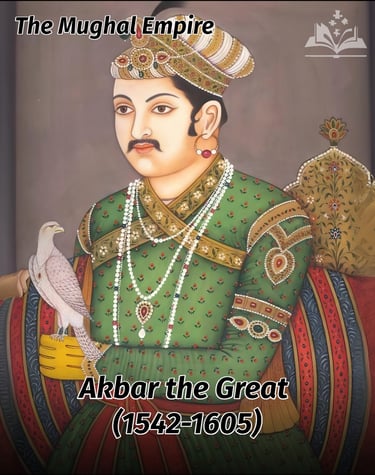

Akbar the Great (1542-1605)—The Mughal Empire!
The third Mughal emperor Akbar the Great (अकबर महान) is famous for his policies of religious tolerance, administrative reforms, and efforts to promote cultural synthesis. His reign marked the golden age of the Mughal Empire.
Cultural synthesis: Akbar's court was a cultural amalgam, where Persian, Indian, and Central Asian influences blended seamlessly. This synthesis led to the development of Mughal architecture, miniature painting, and music. The construction of iconic monuments such as Fatehpur Sikri and the Akbari Mahal exemplifies this cultural fusion.
Religious debate: Akbar's policy of religious tolerance was highlighted by his initiative to invite scholars of different religions to his court for debates. This eventually led to the creation of Din-i Ilahi, a syncretic religion that attempted to unify the spiritual aspects of different religions.
Agrarian reform: Akbar introduced the Zabt system, an advanced revenue system that assessed taxes based on crop productivity. This innovation stabilized the empire's economy and ensured prosperity for his subjects.
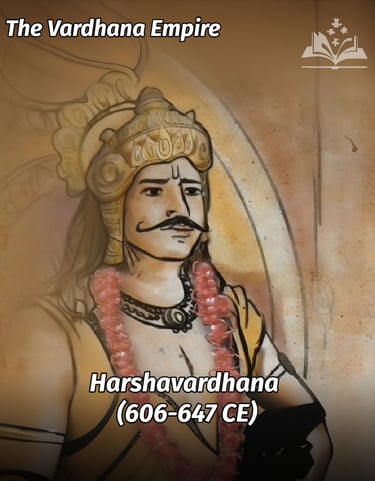

Harshavardhana (606-647 CE)—The Vardhana Empire!
Harshavardhana (हर्षवर्धन), the last great Hindu emperor of North India, ruled over a vast empire that extended from Punjab in the north to Bengal in the east and Orissa in the south.
Diplomacy: Harshavardhana maintained diplomatic relations with the Tang dynasty of China, as evidenced by the travels of the Chinese traveler Xuanzang. Xuanzang's accounts give a detailed account of the prosperity, religious tolerance and cultural vibrancy of Harsha's empire.
Literary Contributions: Harsha was not only a patron of the arts but also a poet and playwright. He wrote three Sanskrit plays—Ratnavali (रत्नावली), Nagananda (नागनंदा) and Priyadarsika (प्रियदर्शिका)—which are still known in Indian literature for their poetic brilliance.
Public Welfare: Harsha's reign saw large-scale public works, including the construction of roads, rest houses (dharmashalas) and hospitals. He also held religious congregations every five years, in which money and goods were distributed to the needy.
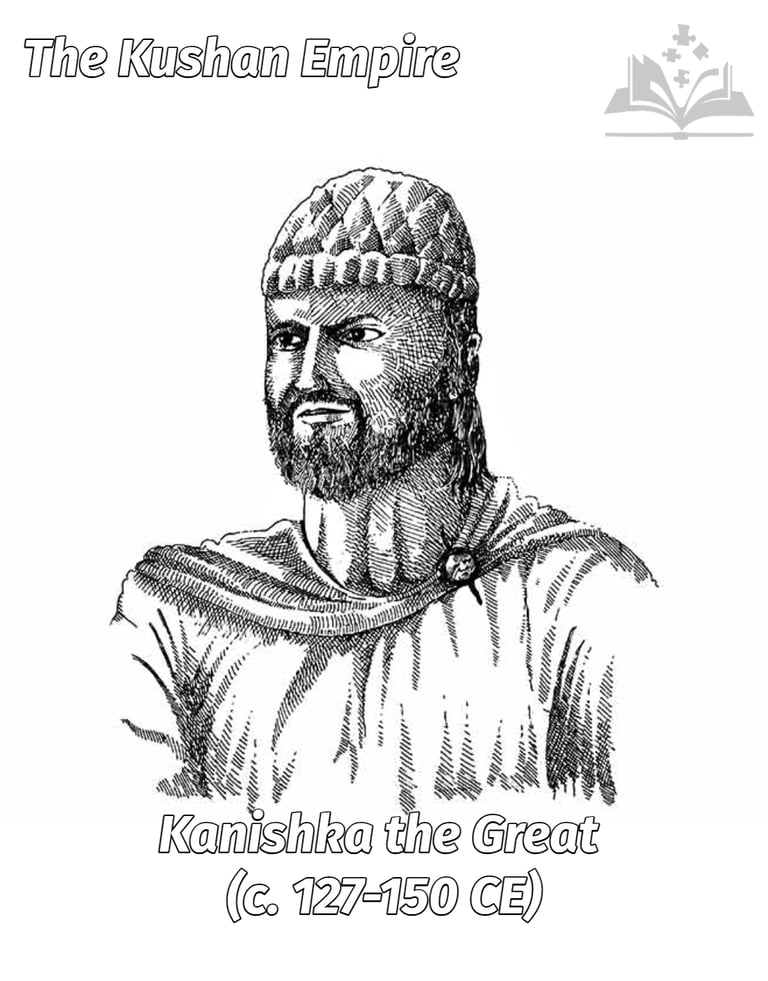

Kanishka the Great (c. 127-150 CE)—The Kushan Empire!
Mahraj Kanishka (महाराजा कनिष्क) the Great, the most prominent ruler of the Kushan Empire (कुषाण साम्राज्य), is known for his patronage of Buddhism and his role in the spread of the religion across Asia.
Religious influence: Kanishka's reign marked a turning point in the history of Buddhism, particularly with the spread of Mahayana Buddhism. His support for Buddhist councils and monasteries helped the religion expand into Central Asia, China, and beyond.
Cultural syncretism: His empire became a cultural mix where Greco-Roman, Indian, Persian, and Central Asian influences mingled. This syncretism is evident in the diverse art and architecture of the period, particularly in the Gandhara art school, which combined Greek artistic techniques with Indian themes.
Economic prosperity: The Kushan Empire under Kanishka controlled major trade routes, including parts of the Silk Road, leading to economic prosperity and cultural exchange. This facilitated the movement of goods, ideas, and technologies across continents, enriching the cultural and economic landscape of the empire.
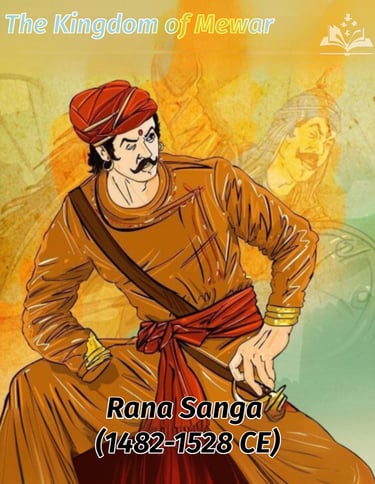

Rana Sanga (1482-1528 CE)—The Kingdom of Mewar!
Rana Sanga (राणा सांगा) was a heroic ruler of Mewar (मेवाड़) who united the Rajput states against the invading armies of Babur. He is remembered for his bravery and leadership in resisting Mughal expansion into Rajputana.
Alliance building: Rana Sanga was instrumental in forming a confederation of Rajput states to counter the Mughal threat. His ability to unite disparate Rajput clans under a common purpose demonstrated his exceptional leadership and diplomatic skills.
Military prowess: He led his army in several successful battles against neighboring Muslim rulers, significantly expanding Mewar's territory. His most notable victory was the Battle of Chittorgarh in 1527, where he defended the fort against a formidable enemy.
Cultural patronage: Despite his military focus, Rana Sanga was also a patron of the arts. His court was a center of Rajput culture and education, promoting the development of literature, music, and the fine arts. His support helped preserve Rajput traditions and cultural heritage during turbulent times.
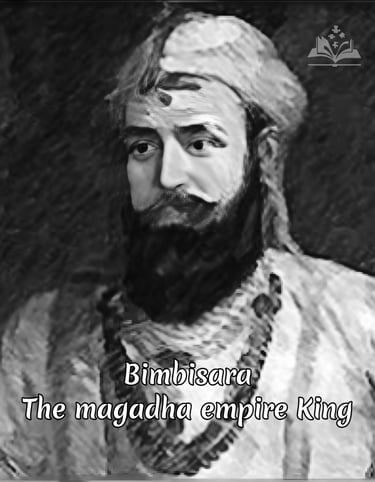

Bimbisara (558-491 BCE)—The Haryanka Dynasty (Magadha)
Bimbisara (बिम्बिसार) was one of the earliest and most powerful rulers of the Haryanka dynasty (हर्यक राजवंश), which later became part of the Magadha Empire. Known for his diplomatic and military skills, he expanded his empire through strategic marriages and conquests.
Territorial expansion: Bimbisara expanded the Magadha empire through military conquests and strategic alliances. He brought several neighboring kingdoms under his control and consolidated Magadha's power in eastern India.
Capital development: He developed the city of Rajgir as his capital, fortifying it with strong defenses and making it a center of political and religious activity. Rajgir became a center of trade, culture, and education during his reign.
Buddhist patronage: As a contemporary of Gautama Buddha, Bimbisara was one of the earliest royal patrons of Buddhism. He provided land and resources for the establishment of monasteries and supported Buddhist teachings, thereby contributing to the growth and spread of the religion.
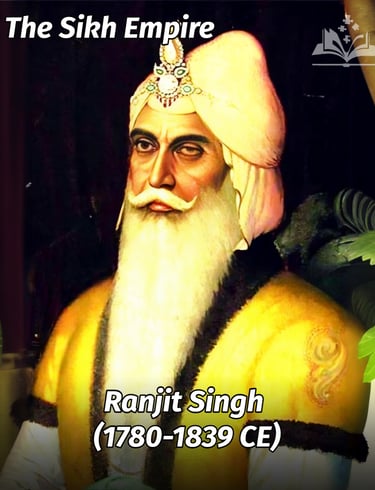

Ranjit Singh (1780-1839 CE)—The Sikh Empire!
Maharaja Ranjit Singh (महाराजा रणजीत सिंह), known as the "Lion of Punjab (पंजाब का शेर)," founded the Sikh Empire (सिख साम्राज्य) in the early 19th century. He successfully unified the various Sikh misls (confederations) and established a powerful state in the Punjab region.
Military innovations: Ranjit Singh modernised his army by appointing European officers and introducing modern military techniques. This made the Sikh Khalsa Army one of the most formidable armies in India, able to resist British colonial expansion during his lifetime.
Religious tolerance: Ranjit Singh is remembered for his secular approach to governance. He employed Hindus, Muslims and Sikhs in his administration, ensuring that all religious communities were treated with respect and equality. This policy promoted harmony and unity within his diverse empire.
Infrastructure development: His reign saw the construction of numerous forts, palaces, and religious structures. One of his most significant contributions was the rebuilding and restoration of the Harmandir Sahib (Golden Temple) in Amritsar (अमृतसर में हरमंदिर साहिब (स्वर्ण मंदिर), which remains a central place of worship for Sikhs worldwide.
Economic prosperity: Under Ranjit Singh, the Sikh Empire prospered economically. He promoted agriculture, trade, and industry, which ensured the empire's prosperity. The establishment of trade routes and the development of infrastructure such as roads and canals facilitated economic growth and stability.
The legacy of India's greatest kings is a testament to their visionary leadership, military prowess, and devotion to art, culture, and religion. From the vast Maurya and Gupta empires to the resilient Maratha and Sikh kingdoms, each of these emperors played a vital role in shaping the history of the subcontinent. Their contributions not only unified vast regions under strong rule but also fostered cultural and economic prosperity that resonated for ages. Understanding their reigns provides invaluable insights into the rich fabric of India's historical and cultural development.
Subscribe To Our Newsletter
All © Copyright reserved by Accessible-Learning Hub
| Terms & Conditions
Knowledge is power. Learn with Us. 📚


